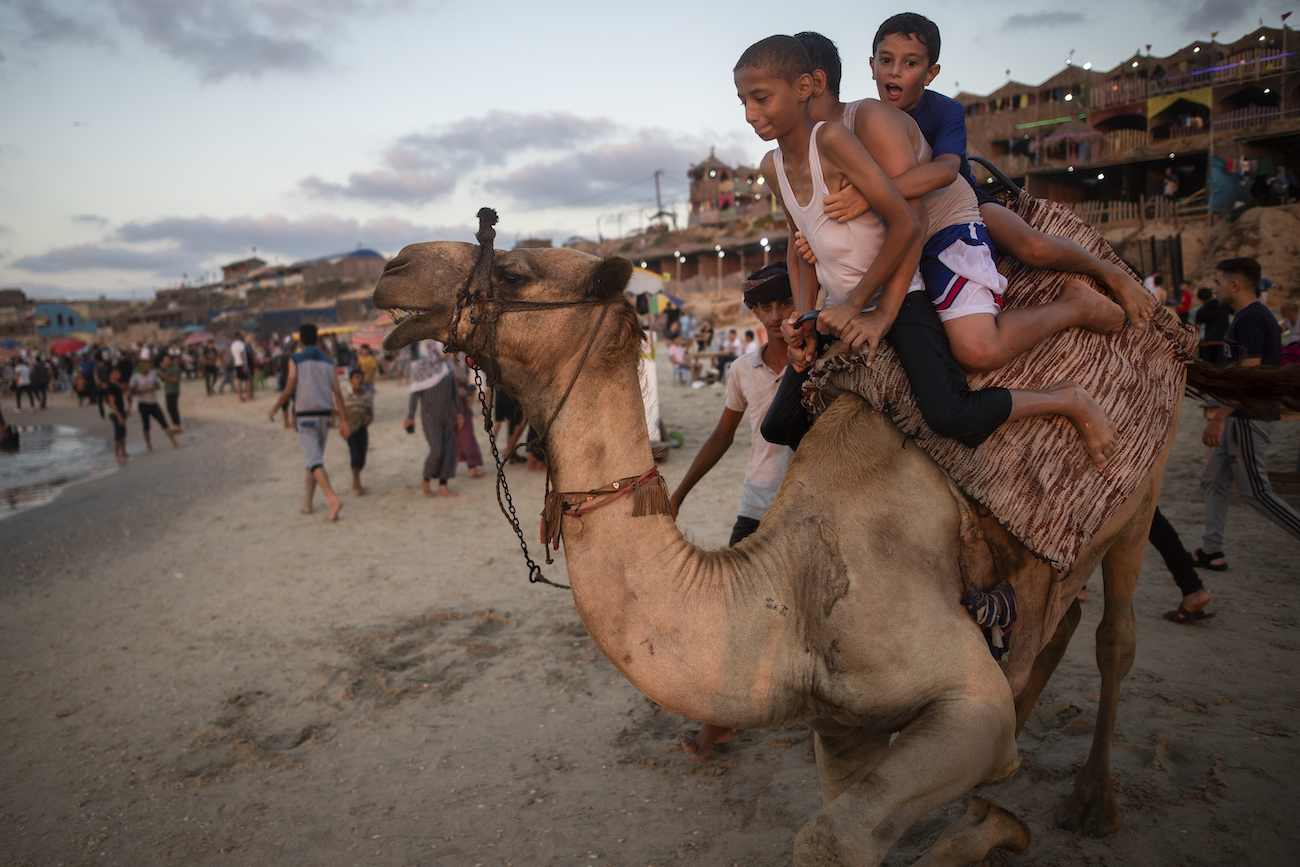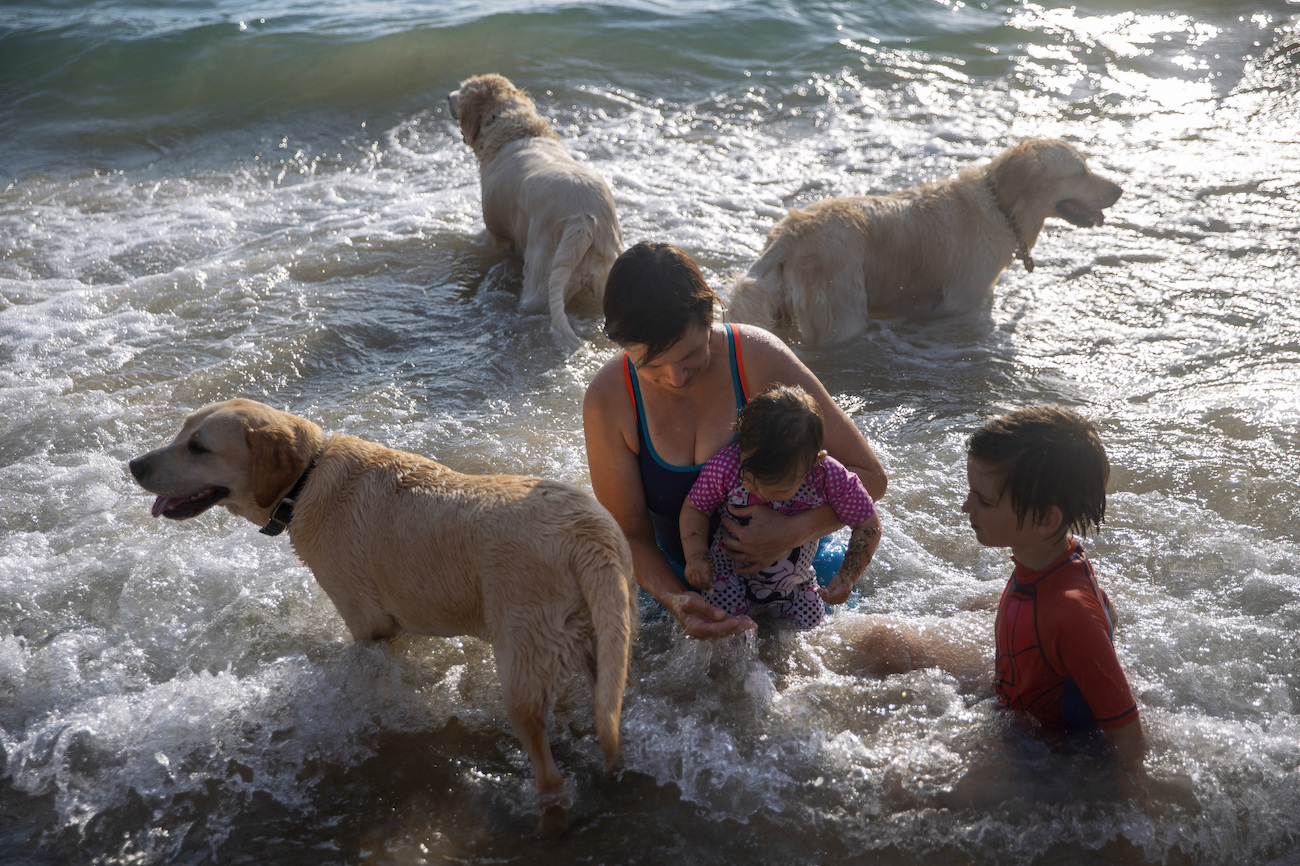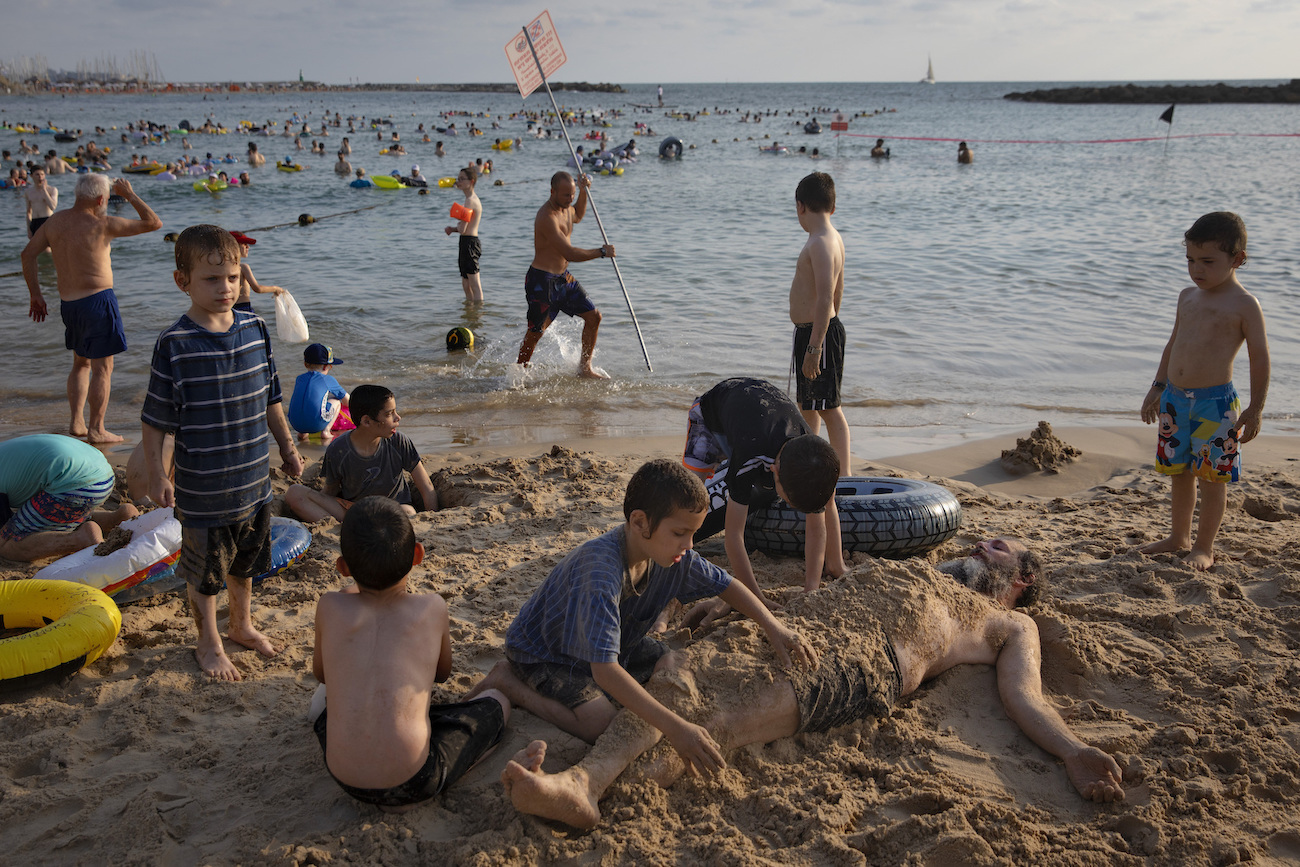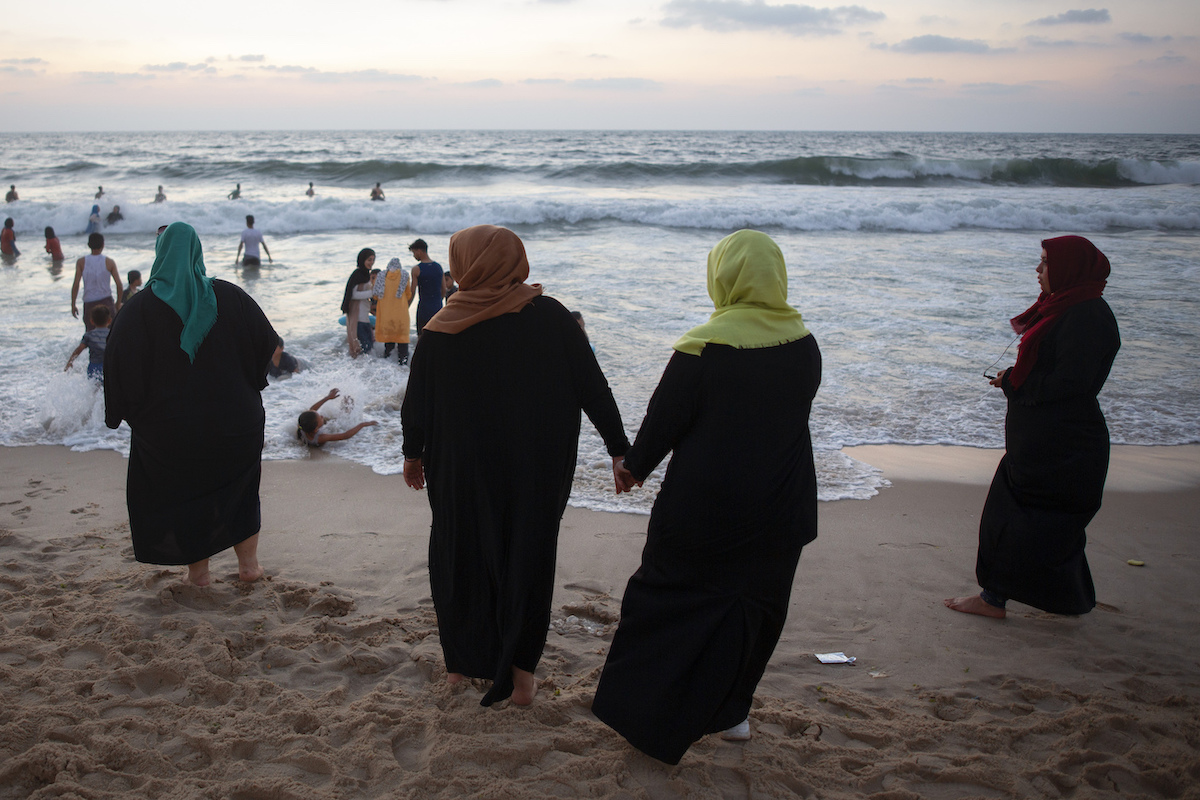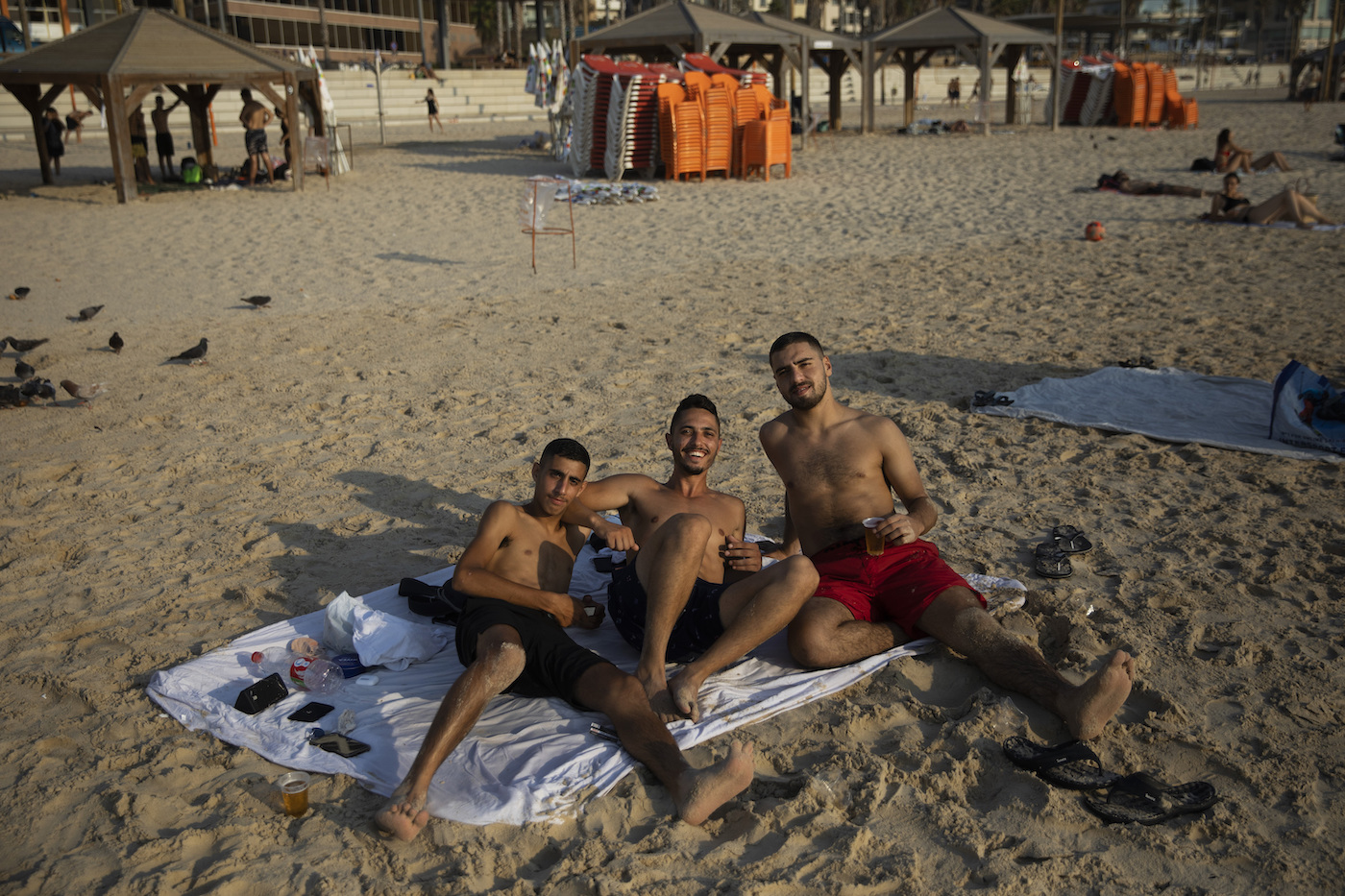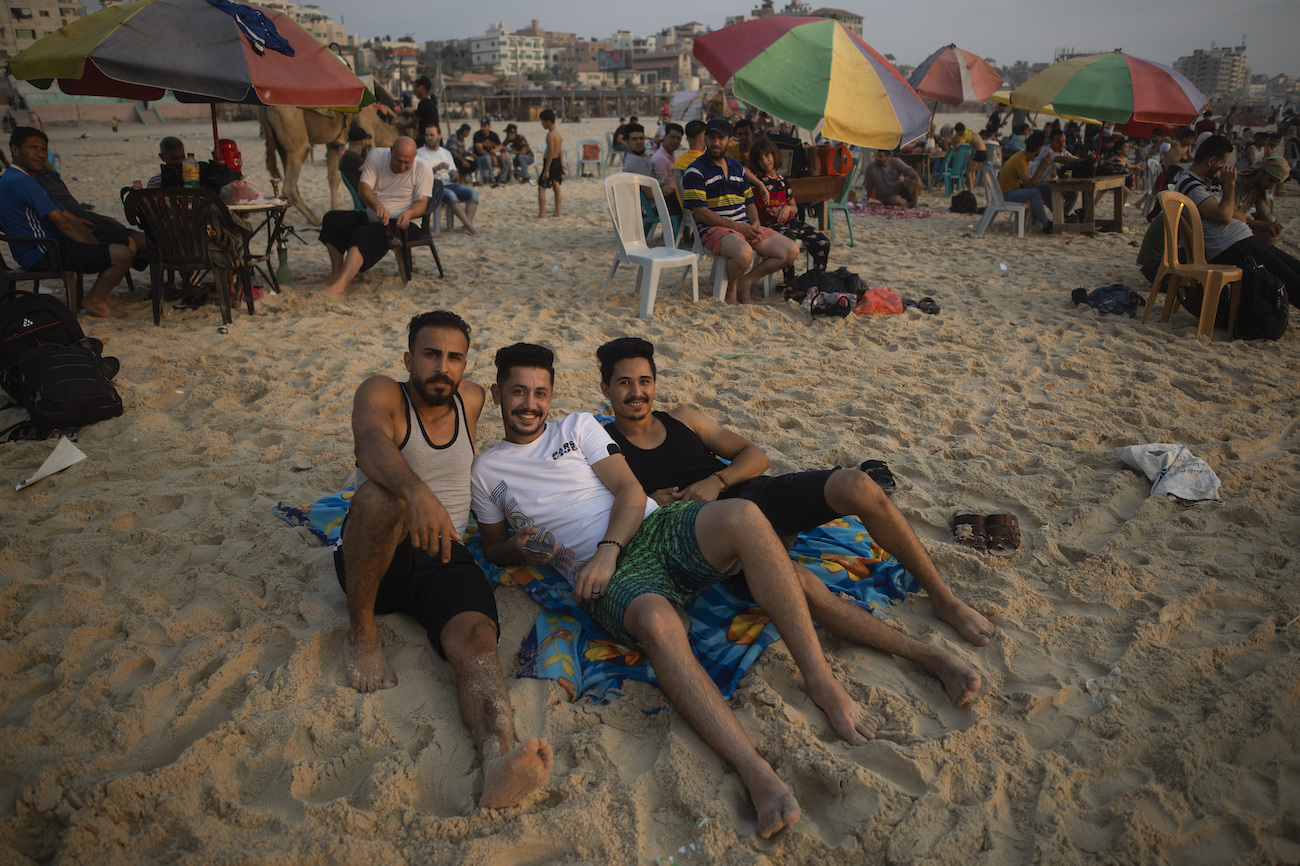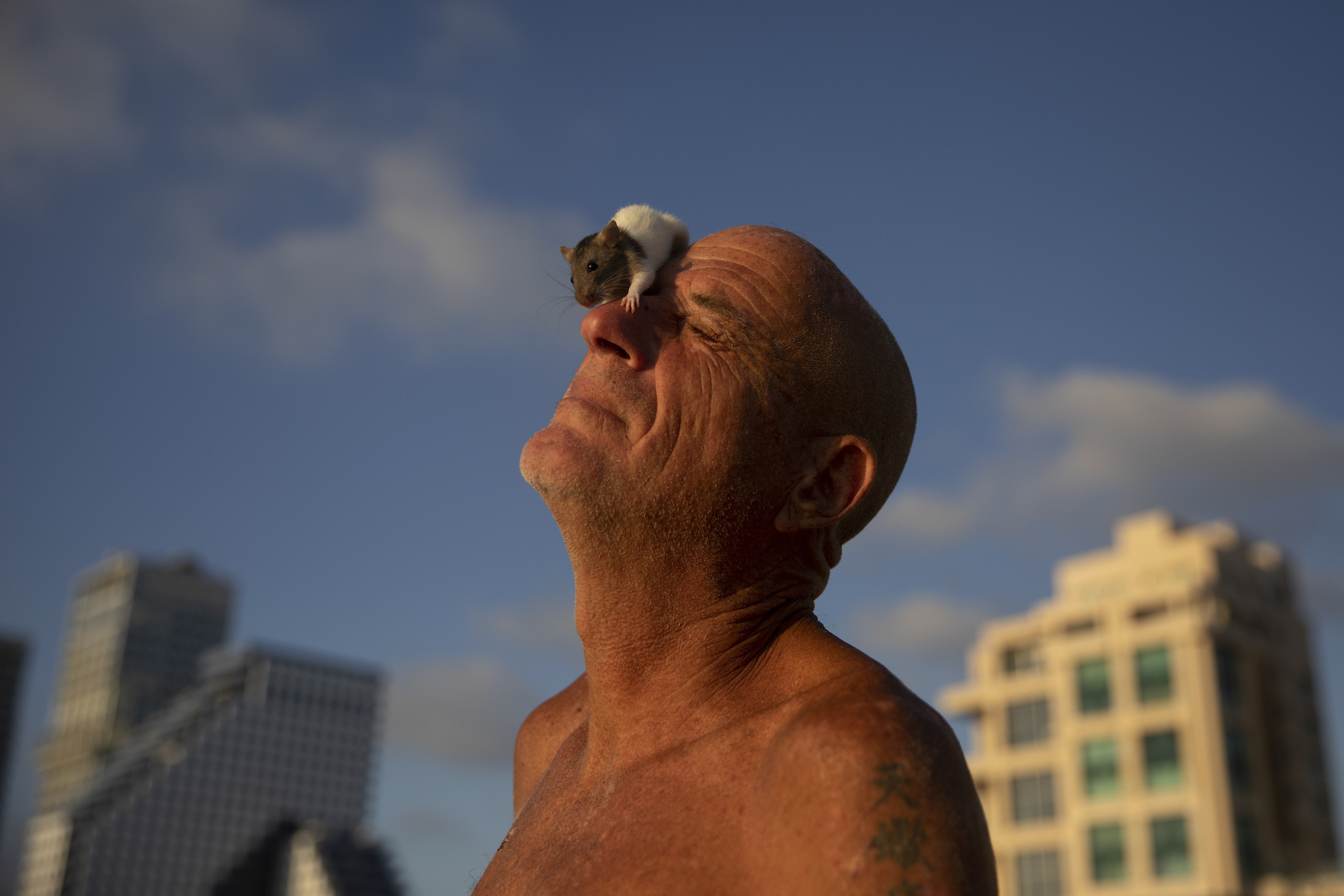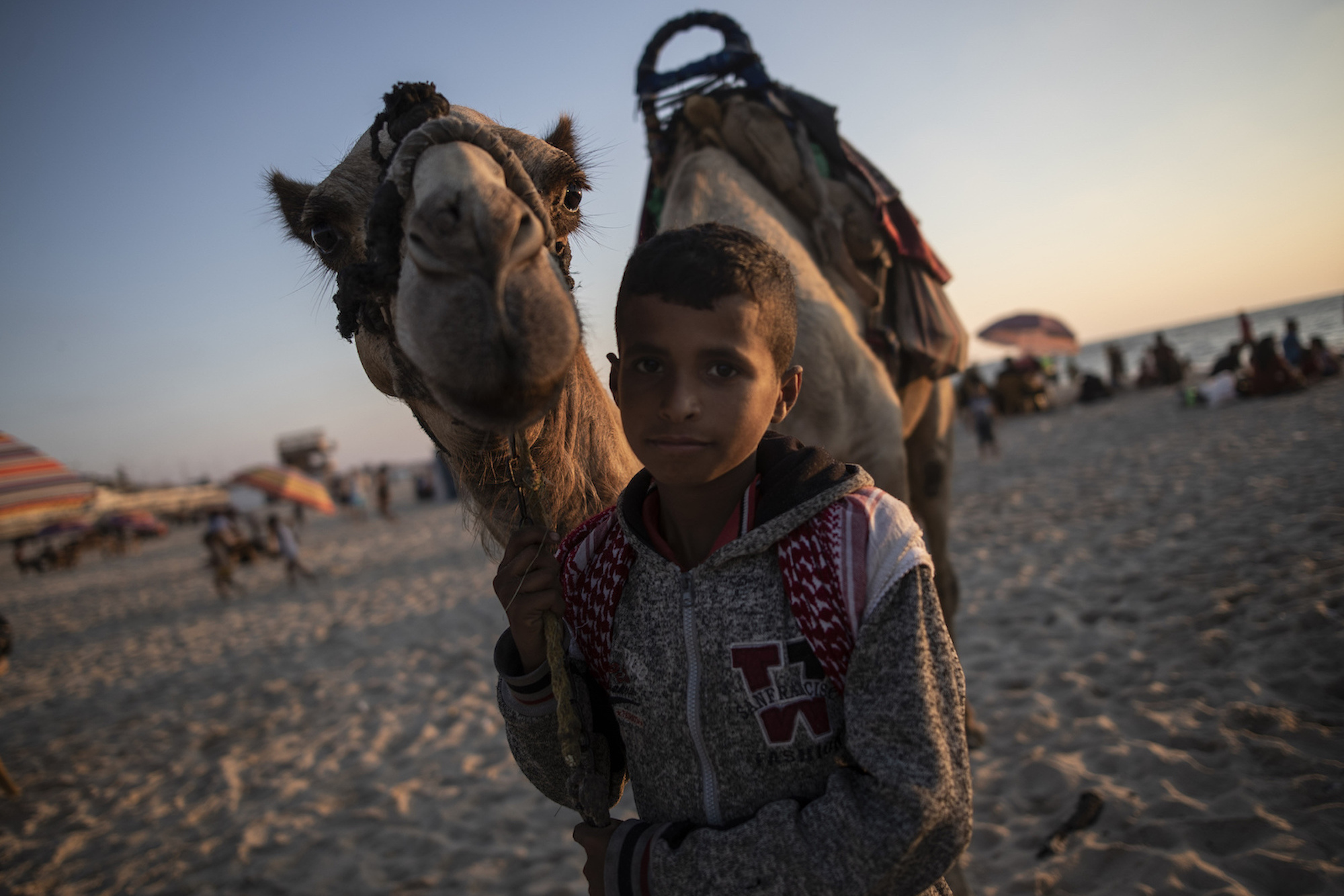イスラエルの都市、テルアビブのビーチと、パレスチナ自治政府の行政区画であるガザ・シティのビーチには、同じ地中海の波が押し寄せている。しかし、両者はまったくの別世界だ。それは、1世紀におよぶ紛争によって敵対しているから、というだけではない。

Google Map
テルアビブでは、イスラエル人がビキニやショートパンツ、タンクトップを着て、タトゥーを露わにしている。冷たいビール瓶が太陽の下で汗をかき、ゴールデンレトリバーがフリスビーを追いかけ、ボードを抱えたサーファーたちが波打ち際へと向かう。一見するとサンディエゴかマルセイユといった海辺の大都会のようで、ここが中東であることも、あちこちで惨事が起きていることも忘れてしまっているようだ。
- 夏の1日を楽しむイスラエルの人々 テレアビブのビーチにて (AP Photo / Oded Balilty)
- イスラエル、テレアビブのビーチで犬と遊ぶ家族 (AP Photo / Oded Balilty)
- 超正統派のユダヤ人の男性と子供たち。(AP Photo / Oded Balilty)
2007年にイスラム過激派のハマスが政権を掌握して以来、ガザはイスラエルとエジプトによって封鎖され、パレスチナの飛び地として今も混沌が続いている。ガザ中心部から70キロ離れたこのビーチは、家族連れが息抜きできる唯一のオープンスペースであり、フェンスや監視塔のない貴重な風景でもある。
- ガザのビーチ 水に飛び込むパレスチナの子どもたち (AP Photo / Khalil Hamra)
- ガザシティのビーチ ロバと一緒に波を戯れる人々 (AP Photo / Khalil Hamra)
- ガザ・シティのビーチ (AP Photo / Khalil Hamra)
イスラエルのドキュメンタリー写真家であるオデッド・バリルティ氏は、多くのイスラエル人と同様、2005年にイスラエルが軍と入植者を撤退させて以来、ガザには行っていない。アラブのフォトジャーナリスト、カリル・ハムラ氏は、多くのガザ出身のパレスチナ人と同様、テルアビブに行ったことがない。
彼らはいずれもピューリッツァー賞を受賞した写真家で、20年間にわたりAP通信社でイスラエルとパレスチナの紛争を取材してきたものの、互いに顔を合わせたのは2003年にヨーロッパで開かれた写真展の時だけだった。
今回のプロジェクトでは、2人はZoomで会話をし、何カ月もかけて写真を撮っては共有し、互いの場所で「同じ」ような写真はないかと追い続けてきた。4度のガザ紛争を、戦線の双方で取材してきた彼らは、共通の現実をファインダーでとらえようとしたのだ。
「私がテルアビブで水に足をつけて立っていたあの日、カリルもガザで水に足をつけて立っていました。そして、それは同じ水だったのです」とバリルティ氏は言う。ただ、違いは明らかだった。
バリルティ氏は、このプロジェクトを通じて「カリルの目を通してガザを見ている」ような感覚になったと語る。ハムラ氏が特に心を奪われたのは、テルアビブとガザでそれぞれ撮影された写真だ。いずれも、10代から20代前半の若い男性3人がビーチで寝そべっているという、非常によく似たショットだった。
- テレアビブのビーチで夏の1日を楽しむイスラエルの若者たち (AP Photo / Oded Balilty)
- ガザシティのビーチで夏の1日を楽しむパレスチナの若者たち(AP Photo / Khalil Hamra)
イスラエルでは、その年齢の男性は通常、兵役義務で徴兵されている。一方、ガザで同年代の男性の多くは厳重に警備された辺境の地で暴力的な抗議活動を行い、命を落とすことも多い。「でも、この人たちはリラックスして、泳いで、楽しんでいました」とハムラ氏は言う。
2008年以降、イスラエルとハマスは4度の戦争を繰り返しており、直近では今年の5月に戦闘が起きている。ガザからテルアビブにロケット弾が撃ち込まれ、街中に空襲警報のサイレンが鳴り響いた。イスラエルによる空爆はガザ市の高層ビルを破壊し、海軍は海岸を砲撃した。
戦争と封鎖によってガザのインフラは破壊された。下水が海に垂れ流され、海岸線を汚し、北のイスラエルにまで流れ込んでいる。
パレスチナ人はガザを常々「住民200万人のための野外刑務所」と呼んでいるが、そのほとんどが1948年のイスラエル建国を巡る戦争で生まれた難民の子孫だ。ガザのロケット弾は10年以上にわたって近隣のイスラエル地域社会に恐怖を与え続け、イスラエルの人々はガザを「テロリストの巣窟」と見なしている。
- フットバレーボールを楽しむイスラエルの人々 テレアビブのビーチにて (AP Photo / Oded Balilty)
- イスラエル人のMoshe Nehoshtanは、ペットのネズミと海辺で遊ぶ テレアビブのビーチにて(AP Photo / Oded Balilty)
- ラクダを引くパレスチナ人の少年 ガザ・シティのビーチにて (AP Photo / Khalil Hamra)
しかし、夏らしいある日のビーチでは、どちらも同じ人間であり、そこには人々の暮らしがあることがわかる。
イスラエルの少年もパレスチナの少年も、岩場の桟橋をよじ登ったり、何度も何度も海に飛び込んだりして、一日中遊んでいる。若い男性たちは柔らかい砂の上でパルクール(フランス発のスポーツ)に挑戦する。イスラエル人の親も、パレスチナ人の親も、幼い子どもたちに優しく浮き輪をつけてやっている。
誰もが同じ地中海の太陽を浴び、遠くで砕け散る波を眺め、長い夏の日を満喫している。

左:パレスチナ、ガザのビーチにある木製のライフガードステーション
右:イスラエルのテレアビブのビーチにあるライフガードステーション
(AP Photo / Oded Balilty, right, Khalil Hamra, left)
—
AP PHOTOS: Summer days at the beach, in Israel and Gaza
By The Associated Press undefined
Though the beaches in Tel Aviv and Gaza City look out on the same cresting waves of the Mediterranean Sea, they are worlds apart — and not just because they sit on opposite sides of a century-old conflict.
In Tel Aviv, Israelis wear bikinis, shorts and tank tops that show off their tattoos. Bottles of cold beer sweat under the sun as golden retrievers race after frisbees and surfers carry their boards out to the breakers. At first glance it looks like San Diego or Marseilles, a wealthy seaside metropolis where the Middle East and its various catastrophes can be comfortably ignored.
Gaza, just 70 kilometers (40 miles) away, is a crowded Palestinian enclave that has been cut off by an Israeli-Egyptian blockade since Hamas militants seized power in 2007. The beach is one of the only open spaces where families can breathe — a rare vista without fences or guard towers.
Oded Balilty, like most Israelis, has not been to Gaza since Israel withdrew its soldiers and settlers in 2005. Khalil Hamra, like most Palestinians from Gaza, has never been to Tel Aviv.
The two Pulitzer Prize-winning photographers have been covering the Israeli-Palestinian conflict for The Associated Press for two decades but have only met in person once, at a photo exhibition in Europe in 2003.
For this project, they communicated by Zoom and spent months taking pictures, sharing them, and then trying to find similar shots from the other side. After covering four Gaza wars from opposite sides of the battle lines, they tried to capture a shared reality.
“On the same day that I was standing with my feet in the water in Tel Aviv, Khalil was standing with his feet in the water in Gaza, and it was the same water,” Balilty said.
The differences were just as clear.
Balilty described how the project made him feel as though he was “seeing Gaza through Khalil’s eyes.” Hamra was particularly moved by a set of nearly identical pictures from Tel Aviv and Gaza, each showing three young men in their teens or early 20s reclining on the beach.
Men that age in Israel are usually doing their compulsory military service. Men that age in Gaza often risk their lives in violent protests along the heavily guarded frontier. “But these guys, they were relaxing, they were swimming, they were having fun,” Hamra said.
Israel and Hamas have fought four wars since 2008, the most recent one in May. Rockets fired from Gaza crashed into Tel Aviv and set off air raid sirens across the city. Israeli airstrikes toppled multistory buildings in Gaza City and the navy shelled the coast.
The wars and the blockade have battered Gaza’s infrastructure. Untreated sewage has poured into the sea in recent years, polluting the coastline and drifting north into Israel.
Palestinians routinely refer to Gaza as an open-air prison for its 2 million residents, most of them the descendants of refugees from the 1948 war surrounding Israel’s creation. Israelis tend to view Gaza as a den of terrorists, whose rockets have been sowing fear in neighboring Israeli communities for more than a decade.
But a typical summer day at the beach reveals shared humanity.
Israeli boys and Palestinian boys can spend the whole day horsing around, scrambling up rocky jetties and plunging into the water again and again and again. Older boys try out parkour — urban gymnastics best attempted on soft sand. Israeli and Palestinian parents tenderly attach floats to their little ones, who squeal with glee each time the waves rush over their tiny toes.
Everyone basking in the same Mediterranean sun, watching the waves break off in the distance, savoring the long summer days while they last.
—
By The Associated Press undefined
